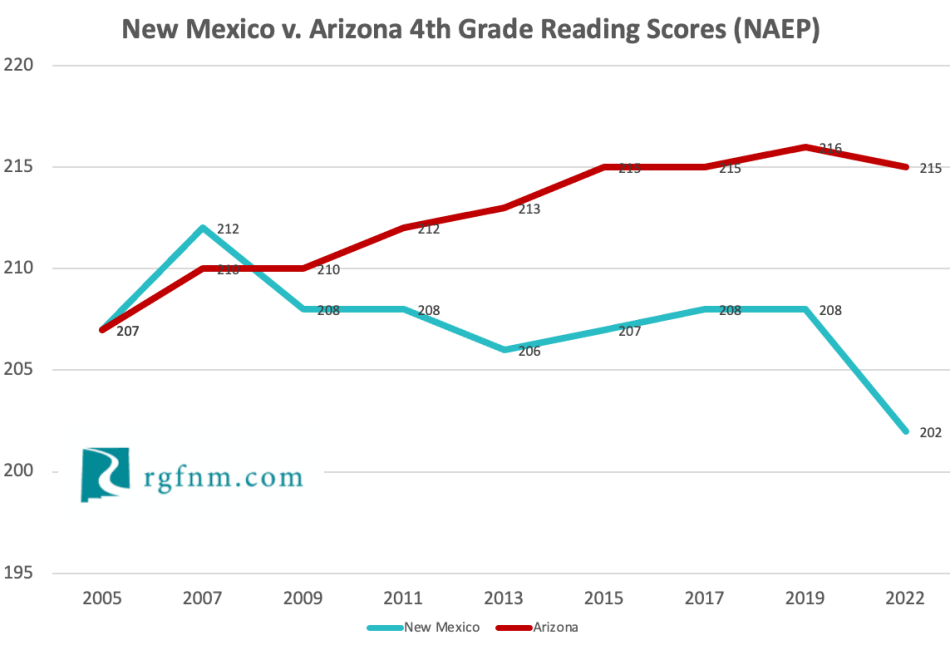But Arizona and Mississippi have enacted serious reforms while New Mexico has not. Using NAEP test scores, it is easy to see which states have improved their education systems and which haven’t. We’ll use fourth-grade reading scores to make the comparison. Many education analysts argue that fourth-grade reading is especially critical because up until fourth grade, much of education involves learning to read. After fourth grade, it is difficult or even impossible to succeed in school without being able to read well.
In 2005, New Mexico outperformed Mississippi on fourth-grade reading and was tied with Arizona, with a score of 207. By 2022, Arizona outperformed New Mexico 215 to 202 while Mississippi outperformed both states with a score of 216.
Neither Arizona nor Mississippi dramatically increased K–12 spending. According to data from Statista, in FY 2022 Mississippi spent $10,089 per-student, while Arizona spent $10,639. That places them as the third- and fifth-lowest-spending states in the nation. The U.S. average is $15,047.
New Mexico, on the other hand, has increased education spending over the past 15 years or so. In 2005, New Mexico spent far less than the national average and was twelfth-lowest among U.S. states. That was more than either Arizona or Mississippi, but still low.
Today, New Mexico ranks 19th among states at, considering its dismal educational record, an astonishing $15,338 per student. That is higher than the national average despite other states’ having also increased spending over those years.
What happened? Arizona and Mississippi embarked on serious (albeit different) education-policy reforms while New Mexico did relatively little other than increase spending.
Arizona has had a charter-school law since the mid 1990s and continues to see charter schools grow in terms of options and students. It is ranked as the second-best charter law in the nation, according to the Center for Education Reform.
A system of tax credits to be used for private school choice has been in place and growing since 1997, and various specialty programs as well as narrowly targeted vouchers have also made Arizona a school-choice leader. That’s even before the program of universal education savings accounts approved in early 2022 fully takes effect.
Mississippi, on the other hand, focuses less on choice (they have a small charter-school footprint). Instead, it has focused resources on improving early-childhood reading. Starting in 2013, with passage of the Literacy-Based Promotion Act, Mississippi started to require third-grade students to demonstrate basic reading proficiency levels to progress to fourth grade. The state also focused on teaching teachers how to use phonics-based reading instruction.
New Mexico, despite having had charter schools since 1992, has not enacted much in the way of additional reforms, whether those be choice or an early reading focus. Instead, New Mexico has used resources to increase teacher pay.
It will be interesting to see if Arizona (especially with its new choice law) and Mississippi can keep or accelerate the momentum. Sadly, New Mexico is one poorly performing state that has not gotten serious about either approach. The children in my state have suffered despite a large increase in government education spending. Better results are possible without breaking the bank, as Arizona and Mississippi have proven.


